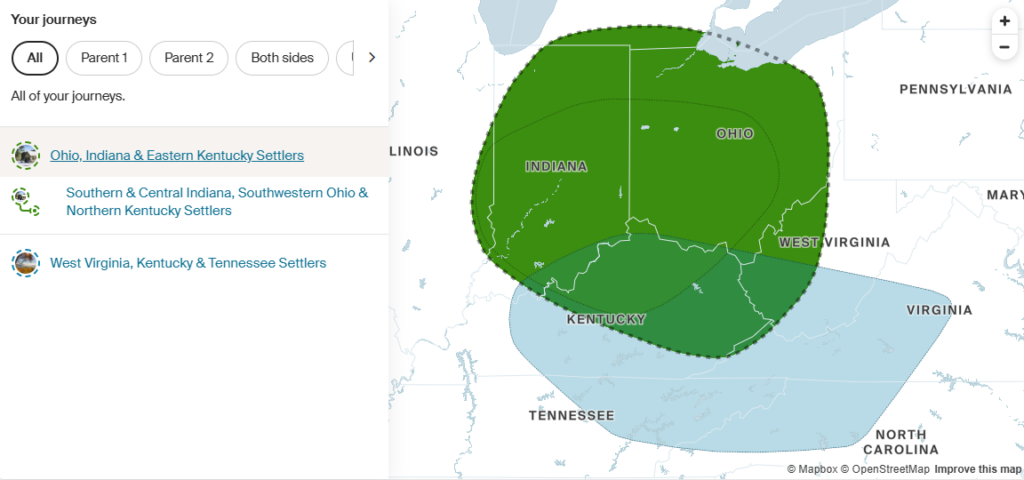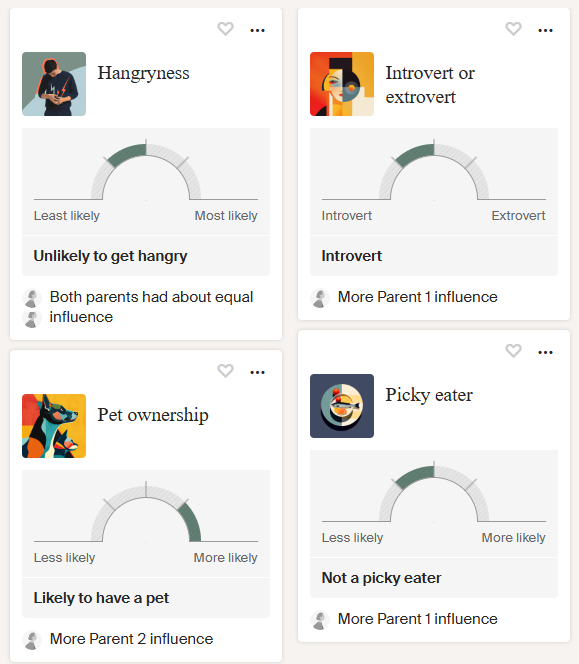
DNA testing has revolutionized family history research, offering new ways to explore your roots, connect with relatives, and uncover fascinating details about your heritage. But have you ever thought about turning your DNA results into compelling stories? At Storied, we believe your DNA results can be more than data—they can inspire narratives that bring your ancestors to life and connect you to your family’s past in a deeply personal way.
How can you use your results from platforms like Ancestry, MyHeritage, and 23andMe to craft family stories? Here are 9 ideas to inspire your DNA narrative:
1. Explore Your Heritage and Ethnicity
One of the first things DNA results reveal is your ethnic breakdown. Use this information to explore your cultural heritage and turn it into a story.
Questions to guide your writing:
- What regions are highlighted in your DNA results, and how do they compare to what you already knew about your ancestry?
- Are there cultural traditions, foods, or customs from these regions you’d like to explore or incorporate into your life?
- How did your ancestors’ heritage influence the way your family lived or celebrated?
Tip: Pair your story with photos, maps, and even recipes from the regions in your DNA profile.
Looking for inspiration to share your ancestry results? Here’s how I turned my DNA ethnicity report into a personal journey.
2. Solve a Family Mystery
Breaking through brick walls in family history is often made possible with DNA testing.
Questions to guide your writing:
- What family mystery needed solving?
- How did DNA evidence help provide answers?
- Did you connect with any DNA matches?
- What impact did it have on your family tree?
Tip: Adding emotion and personal reflection makes the breakthrough more engaging for readers.
3. Highlight DNA Connections
Most DNA platforms allow you to connect with relatives, sometimes leading to newfound family members or relationships.
Questions to guide your writing:
- Did you connect with any distant cousins or relatives through your DNA results?
- What was the first message you exchanged with a DNA match, and what did you discover together?
- How have these new connections enriched your understanding of your family history?
- What stories did your new relatives share?
- What family photos or documents have you exchanged?
Tip: Use correspondence, shared photos, and collaborative research to illustrate how these discoveries add depth and new perspectives to your family’s story.
4. Write Migration Stories
Behind every immigration story is a tale of belonging, as your ancestors found their place in their new communities.

Questions to guide your writing:
- What migration patterns surprised you?
- How did your ancestors’ journey shape your family?
- Which historical events influenced your family’s movement?
Tip: Use maps, historical photos, or ship passenger lists to enhance the narrative.
5. Uncovering a Family Secret
DNA testing has the potential to reveal surprising discoveries about unexpected parentage, changing what we thought we knew about family relationships.
Questions to guide your writing:
- How did DNA reveal the truth?
- What impact did the discovery have on family relationships?
- How did you approach sharing or understanding this information with your family?
- How has this discovery impacted your sense of identity?
Tip: When DNA unveils family secrets, these discoveries deserve gentle handling—each revelation represents someone’s personal story.
6. Finding Shared Traits

Your genetic traits are like family heirlooms, handed down through generations in the most personal way possible.
Questions to guide your writing:
- Which inherited traits run in your family?
- What physical features connect generations?
- How do DNA traits match family stories?
- Are there any unique or surprising traits that sparked curiosity about your ancestors?
Tip: When writing about inherited traits in your DNA family history, connect the science to personal stories. For example, if your family shares a distinctive trait, such as musical talent or a physical characteristic, trace its appearance across generations.
7. Exploring Maternal or Paternal Lines
Your maternal and paternal haplogroups are like ancient signatures, telling stories of your ancestors’ epic journeys across continents and time.

Questions to guide your writing:
- What does your mtDNA or Y-DNA reveal about your direct maternal or paternal ancestors?
- What historical or geographical insights were uncovered through these specific lines?
- How does focusing on one lineage deepen your understanding of family history?
Tip: Research what your haplogroup reveals about where your ancestors lived thousands of years ago and the paths they traveled. Use maps, timelines, and historical context to create a vivid narrative that bridges the gap between ancient history and your family story today.
8. Blending Science with Family Lore
Did your DNA results challenge family lore or confirm long-held traditions? Maybe you learned you’re not as Italian as family tradition suggested, or perhaps you found a surprise Scottish connection that explains your red-headed grandmother. These revelations make compelling stories.
Questions to guide your writing:
- What family stories about ethnicity or heritage were confirmed or debunked by your DNA results?
- How did your family react to unexpected findings or discrepancies in the results?
- Have you uncovered new traditions or insights as a result of these surprises?
Tip: Be sensitive and respectful when discussing discrepancies, as family stories are deeply personal.
9. Writing a Legacy
Your DNA results are not just your story—they’re part of your family’s legacy.
Questions to guide your writing:
- What do you want future generations to know about the DNA discoveries you’ve made?
- How do your DNA results connect with the stories and values you hope to preserve?
- What advice would you include in your family’s story to inspire future research?
Make Your DNA Story Memorable with These Tips:
- Weave Personal Reflections: Include your thoughts and feelings as you discovered the DNA results. Your DNA results are unique to you, so let your voice and perspective shine through.
- Incorporate Visuals: Add charts, maps, photos, and family artifacts to make your story more engaging.
- Use Historical Context: Tie DNA results to specific historical events to bring the story to life.
- Take It Step-by-Step: Focus on one discovery at a time to give each find its due.
- Balance the Story: Include both the science and human element.
- Leave a Trail: Record your research process for future family historians. They will thank you!
Bring Your DNA Stories to Life with Storied
Storied makes it easy to turn your DNA discoveries into meaningful family stories. With tools to organize your research, collaborate with family, and preserve your stories, you can ensure your DNA journey becomes a cherished part of your family’s history.
What DNA discovery will you write about first?
